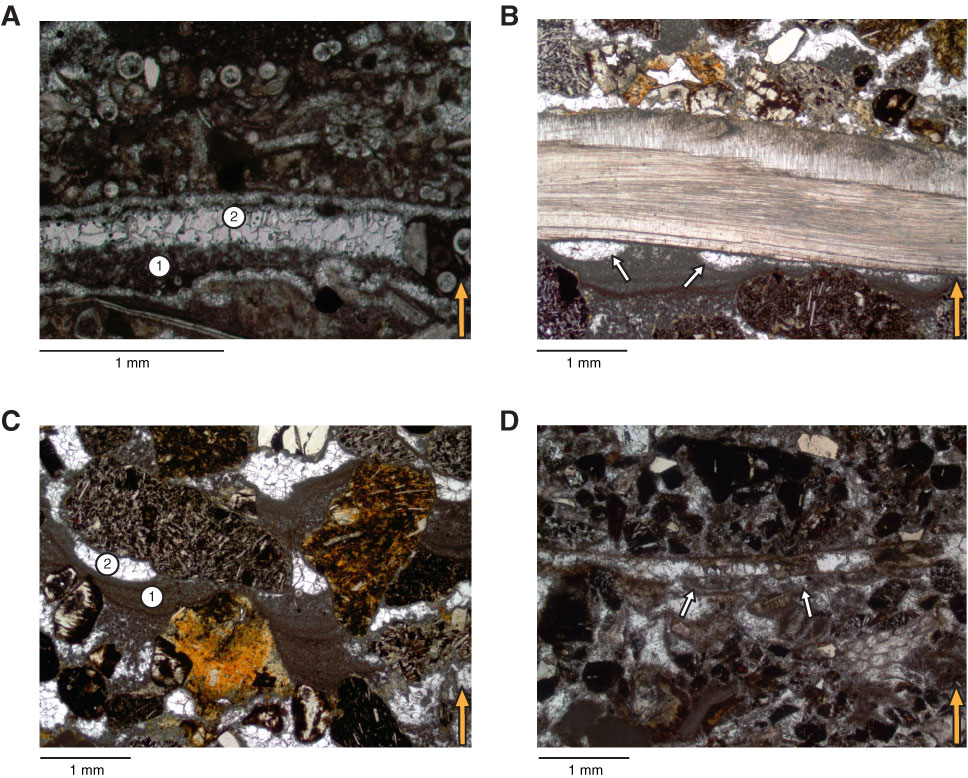
Figure F7. Thin section photomicrographs of cement types and dissolution features typical of a vadose environment (Flügel, 1982) (single polarization). Orange arrows point toward top. A. Geopetal structure in foraminiferal bioclast limestone in Subunit IID (Sample 330-U1374A-3R-1, 70–72 cm; Thin Section 113). Mold of dissolved shell fragment shown includes (1) vadose silt and (2) dogtooth and granular cements. Dissolution of shells and vadose cements occurred probably after the lithification of the limestone. B. Dripstone cement (white arrows) under pristine bivalve shell fragment in basalt conglomerate with bioclasts in Subunit IIE (Sample 330-U1374A-3R-2, 65–68 cm; Thin Section 117). Cementation pattern indicates cementation in a vadose environment. C. Geopetal structures defined by (1) vadose silt and (2) sparry calcite cement in a basalt conglomerate with bioclasts in Subunit IIE (Sample 330-U1374A-3R-2, 65–68 cm; Thin Section 117). Vadose silt indicates cementation in a vadose environment. D. Dripstone cement (white arrows) under dissolved bivalve shell fragment in basalt conglomerate with bioclasts in Subunit XIB (Sample 330-U1374A-21R-4, 76–81 cm; Thin Section 152). Shell fragment was replaced by dogtooth and intergranular cements and, possibly, vadose silt.

Previous | Close | Next | Top of page